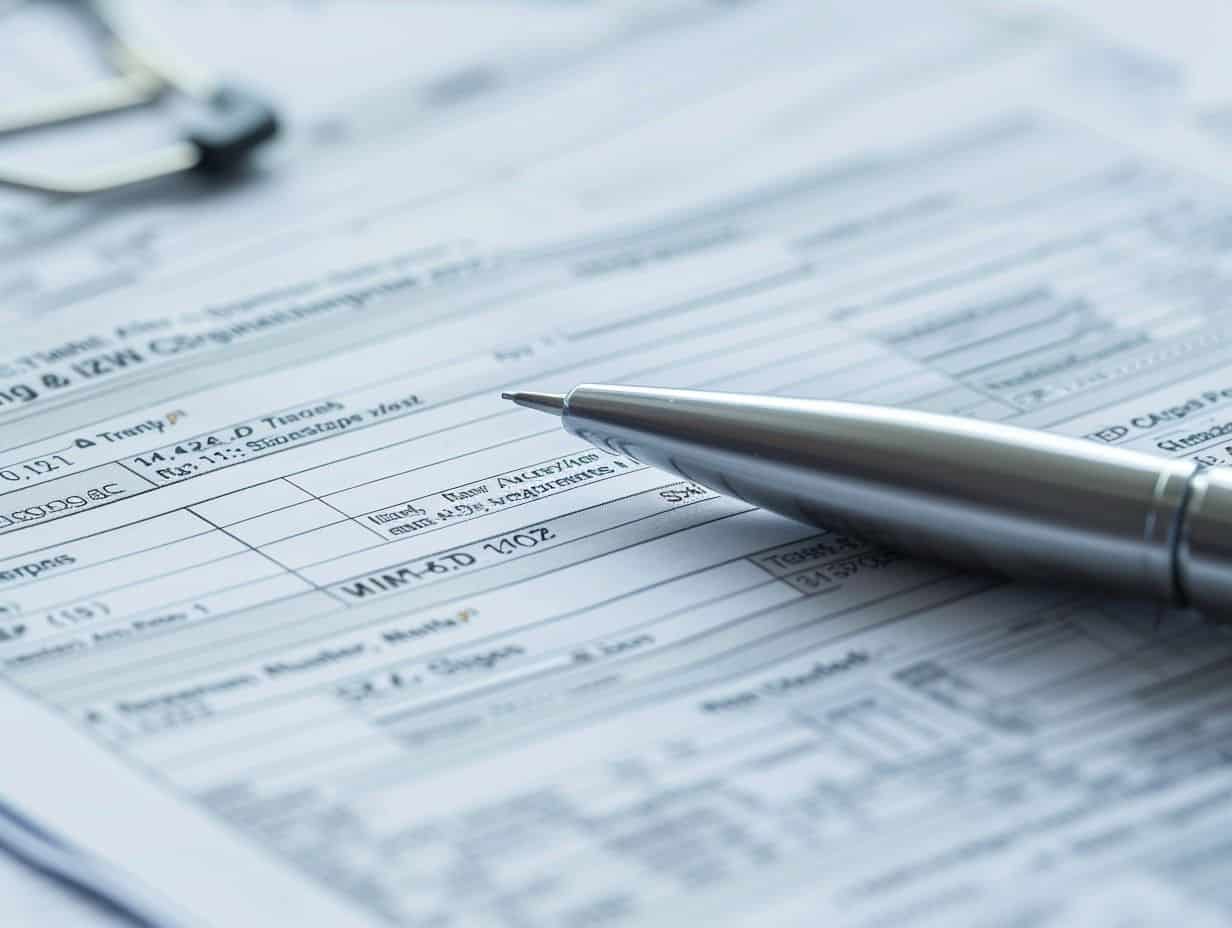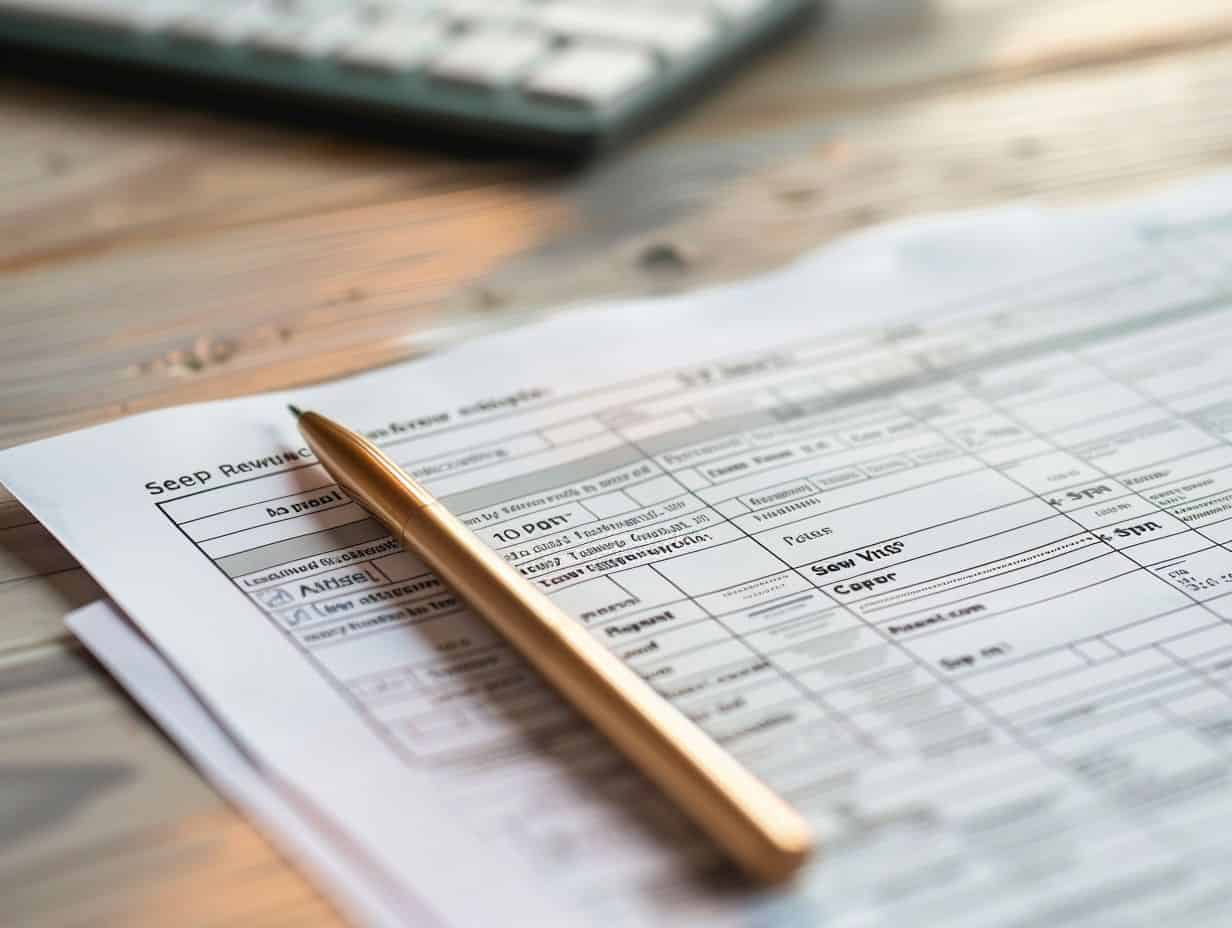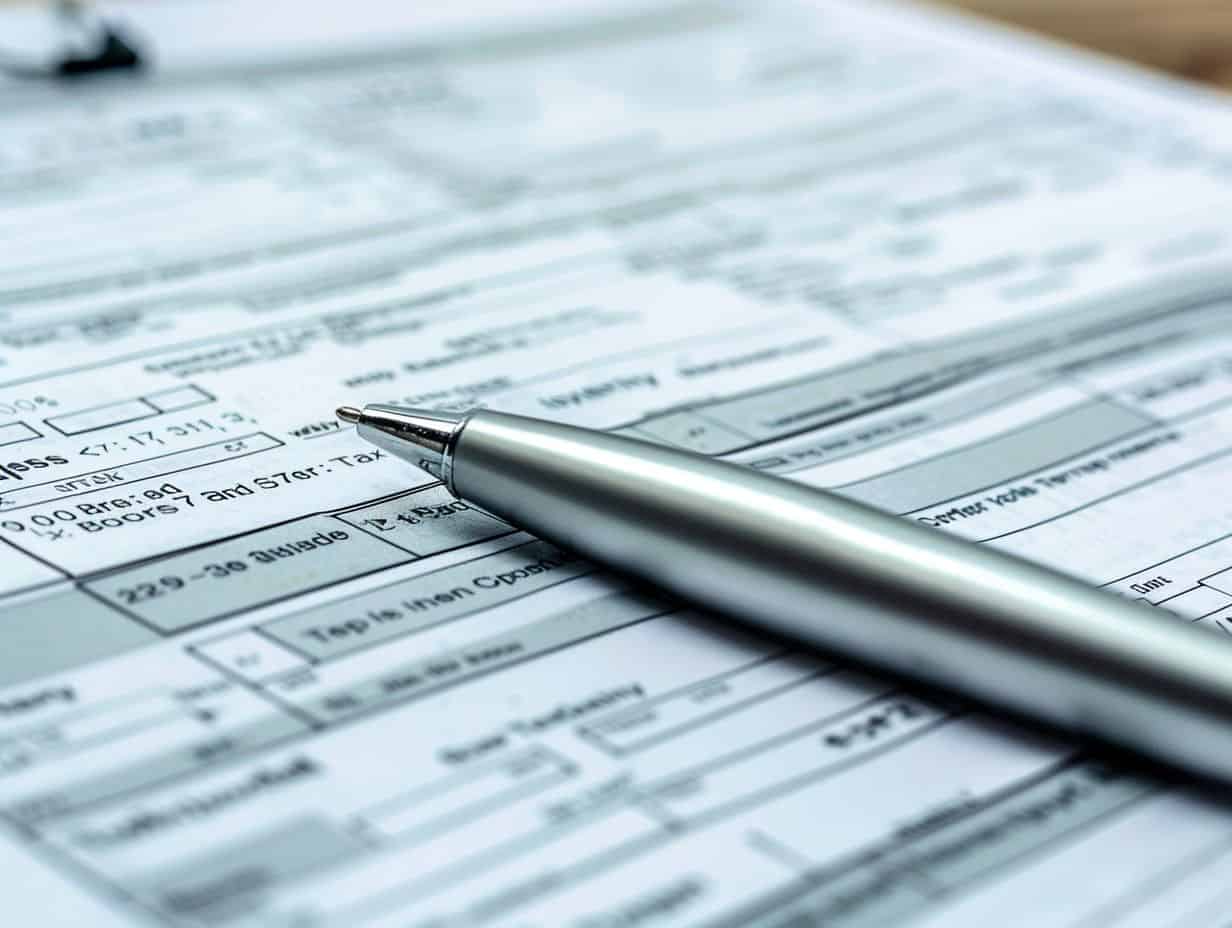- Our content is independently written and reviewed by trusted reviewers & fact-checkers.
- We can earn money by connecting you with top Gold IRA Companies. Learn how our reviews work.
- Want to learn more? Meet our authors and explore our editorial policy.
Are you a self-employed individual looking to report your SEP IRA contributions on Form 1040 but feeling a bit lost? Look no further! This article will guide you through the importance of reporting SEP IRA contributions, where to report them on Form 1040, and provide step-by-step instructions for accurate filing. We will also cover how to calculate deductions for SEP IRA contributions and share additional resources for self-employed individuals. Get ready to navigate the world of SEP IRA contributions with ease! 
Table of Contents
Key Takeaways:
- Reporting SEP IRA contributions is crucial for accurate tax filing and potential deductions.
- The appropriate section to report SEP IRA contributions on Form 1040 can be found under “Adjustments to Income”.
- Self-employed individuals should pay attention to specific rules and regulations when reporting SEP IRA contributions, and utilize resources for additional guidance.
Understanding the Importance of Reporting SEP IRA Contributions
Understanding the significance of reporting SEP IRA contributions requires an appreciation of their implications on tax deductions, self-employment taxes, and overall net profit. The accurate reporting of SEP IRA contributions serves the dual purpose of reducing taxable income and enabling self-employed individuals to build retirement savings while capitalizing on potential tax benefits. The precise reporting of SEP IRA contributions holds substantial importance for optimizing tax deductions, given that these contributions are typically tax-deductible. By meticulously recording these contributions, self-employed individuals can diminish their taxable income, leading to potential reductions in annual tax liabilities. Accurate reporting of SEP IRA contributions is instrumental in the precise calculation of self-employment tax obligations, ensuring adherence to tax laws. This precise reporting also plays a pivotal role in ascertaining the net profit of self-employed individuals, influencing financial planning strategies and retirement savings objectives.
Where to Report SEP IRA Contributions on Form 1040
Understanding the correct procedure for reporting SEP IRA contributions on Form 1040 is essential for individuals who participate in this employer-sponsored retirement plan. The Internal Revenue Service (IRS) mandates precise reporting of SEP IRA contributions to ensure adherence to tax regulations and to facilitate individuals in claiming the relevant deductions on their tax filings. When completing Form 1040, the segment designated for reporting SEP IRA contributions can be located on Line 28. It is imperative to carefully adhere to the guidelines outlined by the IRS to prevent any inaccuracies. It is crucial to meticulously record the total sum of contributions made to the SEP IRA throughout the tax year, including contributions made by the employer on the individual’s behalf. Thoroughly verify all figures and computations to mitigate the risk of errors that might attract IRS scrutiny. By diligently following these procedures, individuals can accurately report their SEP IRA contributions and avail themselves of the tax advantages associated with this retirement plan.
Locating the Proper Section on Form 1040
The proper identification of the section on Form 1040 for reporting SEP IRA contributions requires an understanding of how these deductions influence taxable income, particularly for individuals who are self-employed and file Schedule C. By accurately documenting SEP IRA contributions in the designated section, individuals can effectively diminish their net earnings and decrease their tax obligations. In the context of completing Form 1040 concerning SEP IRA contributions, it is imperative to locate line 28 on the form, which is where these contributions should be recorded. Precision in these calculations is paramount, as they have a direct impact on one’s taxable income. For self-employed individuals utilizing Schedule C, SEP IRA contributions play a pivotal role in diminishing net earnings, consequently leading to a reduction in tax liabilities. It is essential to include all pertinent figures from SEP IRA contributions to optimize deductions and enhance tax benefits. This meticulous approach to reporting can yield substantial savings and contribute to a more advantageous tax position. 
Instructions for Reporting SEP IRA Contributions
Adhering to the guidelines for reporting SEP IRA contributions is crucial for ensuring accurate calculation of the contribution rate and compliance with IRS regulations. Resources such as IRS Publication 560 offer comprehensive direction on contribution limits, eligibility criteria, and methodologies for determining the Adjusted Contribution Rate applicable to SEP IRA participants. A thorough understanding of the components involved in SEP IRA reporting is instrumental in effectively navigating the intricacies of contribution calculations. When establishing the contribution rate for a SEP IRA, careful consideration of factors such as compensation limits and permissible contribution percentages is imperative. The Adjusted Contribution Rate, which accounts for taxable compensation and other specific adjustments, plays a central role in the precise reporting of contributions. IRS Publication 560 serves as a valuable reference tool, providing detailed explanations, illustrative examples, and points of reference to clarify any uncertainties individuals may encounter when managing SEP IRA contributions.
Step-by-Step Guide for Filing SEP IRA Contributions
A systematic procedure for submitting SEP IRA contributions necessitates the calculation of the permissible contribution based on net profit, precise completion of the relevant sections of Form 1040, and adherence to IRS regulations. By adhering to a structured method, self-employed individuals can optimize their retirement savings through SEP IRA contributions while mitigating tax liabilities. For determine the allowable contribution, individuals can refer to the IRS guidelines, which generally permit up to 25% of net profit or a specified maximum threshold. After ascertaining the contribution amount, it is imperative to accurately complete Form 1040, particularly Schedule C for business income, and Schedule 1 for supplementary deductions. Ensuring meticulous documentation and submission is critical to preempt any potential discrepancies with the IRS. Maintaining comprehensive records of income and expenses is advisable to streamline the contribution calculation process and uphold financial transparency.
Calculating Deductions for SEP IRA Contributions
The process of calculating deductions for SEP IRA contributions entails determining the contribution rate, evaluating the impact on taxable income, and optimizing tax savings for self-employed individuals. It is essential to comprehend how SEP IRA contributions influence net earnings and tax obligations to maximize the financial advantages associated with this retirement plan. The contribution rate for a SEP IRA is typically computed as a percentage of the self-employed individual’s net earnings. Although this rate may vary annually, it is restricted to 25% of compensation or $58,000 for the year 2021. To precisely determine the deduction, one can utilize the following formula: Contribution = Net Earnings * Contribution Rate. By making contributions to a SEP IRA, individuals can lower their taxable income, leading to reduced tax liabilities and potentially augmenting their tax refund or diminishing the amount owed to the Internal Revenue Service (IRS). Accurate computation of these deductions is imperative to ensure effective utilization of this retirement savings opportunity.
Ensuring Accurate Deductions for SEP IRA Contributions
It is imperative to ensure the accurate calculation of deductions for SEP IRA contributions by comprehensively understanding the process of calculating contribution rates and adhering to the IRS guidelines for reporting. By correctly calculating the Adjusted Contribution Rate and furnishing the requisite documentation, individuals can avail themselves of the full tax benefits associated with their SEP IRA contributions while mitigating the risk of potential audit discrepancies. Commencing with the determination of the contribution rate pertinent to the plan year is paramount. This process entails considering the compensation of eligible employees and applying the designated rate. For example, if the rate is established at 10% and an employee’s compensation amounts to $50,000, the resulting contribution would be $5,000. Maintaining accuracy in these computations is essential for precise reporting of contributions and mitigating the occurrence of errors that could lead to penalties. Acquainting oneself with the IRS regulations concerning SEP IRA contributions is essential for ensuring compliance and optimizing tax advantages. 
Resources for Self-Employed Individuals
Self-employed individuals have access to a range of resources that can aid in optimizing their retirement planning. These resources include SEP IRA calculators, retirement plan comparison tools, and tax software such as TurboTax. By examining the advantages of SEP IRAs in comparison to Traditional IRAs and utilizing tax-efficient strategies, self-employed individuals can effectively secure their financial future. SEP IRA calculators serve as valuable instruments for individuals to compute contributions, tax deductions, and potential growth over a specified period. Platforms offering retirement plan comparisons allow users to evaluate various retirement plans according to their unique needs and financial objectives. Additionally, tax preparation software like TurboTax streamlines the tax filing process and ensures compliance with pertinent tax regulations. A comprehension of the distinctive benefits associated with SEP IRAs, such as higher contribution limits and potential tax advantages, can assist individuals in making well-informed decisions regarding their retirement savings. By implementing tax-efficient strategies, such as maximizing deductible contributions and effectively managing income levels, self-employed individuals can augment their retirement nest egg while minimizing tax obligations.
Additional Information for Self-Employed Individuals
Self-employed individuals are encouraged to explore further information regarding SEP IRA plans, contribution limits, and IRA contribution regulations as part of their financial planning endeavors. Understanding the implications of SEP IRA contributions on net earnings and the tax ramifications associated with reporting on Form 1040 is crucial for optimizing retirement savings and tax efficiency. Participating in a SEP IRA enables self-employed individuals to allocate a substantial portion of their earnings towards retirement while capitalizing on potential tax benefits. The contribution limits for SEP IRAs are notably generous, allowing contributions of up to 25% of net earnings or a predetermined maximum annual amount. By contributing to a SEP IRA, individuals can effectively lower their taxable income and potentially decrease their tax liabilities. It should be emphasized that contributions must be executed by the tax filing deadline, typically falling on April 15th, to qualify for the preceding tax year. 
Frequently Asked Questions
Where To Report Sep IRA Contributions on 1040?
You can report Sep IRA contributions on line 28 of your Form 1040, also known as the “Self-Employed Pension” section.
Do I need to report Sep IRA contributions on my 1040?
Yes, as a self-employed individual, you are required to report any contributions made to your Sep IRA on your Form 1040.
Can I report Sep IRA contributions on any other form besides 1040?
No, Form 1040 is the only form where you can report Sep IRA contributions as a self-employed individual.
What if I made both employee and employer contributions to my Sep IRA?
If you made both employee and employer contributions to your Sep IRA, you will need to report them separately on your Form 1040. Employee contributions should be reported on line 28, while employer contributions should be reported on line 28 of Schedule 1.
Where can I find the amount of my Sep IRA contributions to report on my 1040?
You can find the amount of your Sep IRA contributions on your Sep IRA account statement or your Form 5498, which is provided by your financial institution.
Do I need to report my Sep IRA contributions if I am not self-employed?
No, if you are not self-employed, you will not report Sep IRA contributions on your Form 1040. Instead, you will report them on line 32 of your Form 1040A or line 17 of your Form 1040EZ.










